Indulging in the heavenly sweetness of Indian desserts is a delight that tantalizes the taste buds. One such treat that has captured the hearts of millions is Ras Malai. With its creamy texture and aromatic flavors, Ras Malai is a dessert that truly transports you to a world of culinary bliss. In this article, we will unravel the secrets of preparing the perfect Ras Malai right in the comfort of your own kitchen. So, get ready to embark on a culinary journey filled with sweetness and joy!
[ez-toc]
History
Ras Malai, a quintessential Indian sweet, carries within its velvety texture and aromatic flavors a rich history that spans centuries. Although the exact origins of Ras Malai are shrouded in mystery, the dessert has become an integral part of Indian culinary traditions, especially in the state of West Bengal. Let’s embark on a journey through time to explore the captivating history of this delightful treat.
Ancient Origins
The origins of Ras Malai can be traced back to the ancient times of the Mughal Empire. It is believed that the Mughals, known for their grandeur and love for indulgent delicacies, were the first to introduce the concept of a sweet dish made with milk and cheese. The Mughal emperors and their royal chefs experimented with various ingredients and techniques to create mouthwatering desserts.
Evolution in Bengal
As the Mughal Empire expanded, the culinary traditions of the empire began to influence the regions it encompassed, including Bengal. The fertile lands of Bengal were renowned for their dairy products, particularly milk and cottage cheese. The people of Bengal, known for their love for sweets, embraced the Mughal influence and began incorporating their own flavors and techniques into the desserts.
Birth of Ras Malai
It was during the 18th century that Ras Malai, as we know it today, is said to have taken shape. In the villages of Bengal, where dairy farming was prevalent, skilled cooks experimented with different recipes using paneer and milk. They sought to create a dessert that would capture the essence of the region while incorporating the luxurious flavors of the Mughal court.
Royal Endorsement
The fame of Ras Malai reached the courts of the Bengal Nawabs, who were known for their patronage of the arts and culinary delights. The nawabs were captivated by the delicate texture and sublime taste of Ras Malai, and it soon became a favored sweet served during royal banquets and festivities. The royal endorsement brought Ras Malai into the limelight, elevating it from a local specialty to a dessert fit for royalty.
Spread across India
As Bengal was a prominent trading center during colonial times, the culinary traditions of the region spread far and wide. Traders, explorers, and migrants carried the recipe for Ras Malai to different parts of India, where it found new variations and adaptations. Each region added its own unique twist, using local ingredients and flavors, further diversifying the beloved dessert.
Modern-day Popularity
Today, Ras Malai holds a special place in the hearts and palates of Indians and dessert enthusiasts worldwide. It is celebrated during festivals, weddings, and special occasions, symbolizing joy, prosperity, and indulgence. Ras Malai has also gained international recognition, with Indian restaurants around the globe offering this sweet delicacy as a testament to the richness of Indian cuisine.
Time
| Step | Time (approx.) |
|---|---|
| Making the Paneer | 30 minutes |
| Preparing the Milk Syrup | 1 hour |
| Shaping and Cooking Ras Malai | 30 minutes |
| Chilling the Ras Malai | 2-3 hours |
| Total Preparation Time | 4-5 hours |
Please note that the preparation time may vary depending on individual cooking skills and equipment used. It’s always a good idea to allocate some extra time for unexpected delays or interruptions.
Ingredients
| Ingredients | Quantity for 2 Servings |
|---|---|
| Full-fat milk | 1 liter |
| Lemon juice or vinegar | 2 tablespoons |
| All-purpose flour (optional) | 1 tablespoon |
| Sugar | 1 cup |
| Green cardamom pods | 4-5 |
| Saffron strands | A pinch |
| Rose water | 1 teaspoon |
| Chopped pistachios and almonds | For garnishing |
Note: The above quantities are based on a serving size for 2 people. Adjust the quantities accordingly if you need to serve more or fewer people.
Directions
1. Making the Paneer
Ingredients:
- 1 liter of full-fat milk
- 2 tablespoons of lemon juice or vinegar
- 1 tablespoon of all-purpose flour (optional, for binding)
Directions:
- Pour the milk into a heavy-bottomed pan and bring it to a gentle boil.
- Once the milk starts boiling, reduce the heat and add lemon juice or vinegar.
- Stir the milk gently until it curdles and the whey separates from the curdled milk solids.
- Line a sieve or colander with a muslin cloth and strain the curdled milk.
- Rinse the paneer under cold water to remove any traces of lemon juice or vinegar.
- Gather the edges of the muslin cloth and squeeze out any excess water from the paneer.
- Hang the muslin cloth with the paneer for about 30 minutes to drain out any remaining water.
- After 30 minutes, take the paneer out of the muslin cloth and knead it gently for a few minutes until it becomes smooth and pliable.
- If the paneer feels crumbly, you can add a tablespoon of all-purpose flour and knead it again to bind it together.
2. Preparing the Milk Syrup
Ingredients:
- 1 liter of full-fat milk
- 1 cup of sugar
- 4-5 green cardamom pods, crushed
- A pinch of saffron strands
- 1 teaspoon of rose water
- Chopped pistachios and almonds for garnishing
Directions:
- In a wide and deep pan, heat the milk over medium heat.
- Let the milk come to a gentle boil and then reduce the heat to low.
- Add sugar, crushed cardamom pods, and saffron strands to the milk.
- Stir the milk occasionally to prevent it from sticking to the bottom of the pan.
- Continue simmering the milk on low heat until it reduces to about half its original quantity. This process may take around 45 minutes to an hour.
- Add rose water to the milk syrup and mix well.
- Turn off the heat and let the milk syrup cool down.
3. Shaping and Cooking the Ras Malai
Ingredients:
- Prepared paneer
- Prepared milk syrup
Directions:
- Divide the kneaded paneer into equal-sized portions and shape them into small flattened patties.
- In a separate wide pan, bring water to a gentle boil.
- Gently slide the paneer patties into the boiling water and cook them for about 7-8 minutes.
- The paneer patties will puff up and float to the surface once they are cooked.
- Using a slotted spoon, carefully remove the cooked paneer patties from the boiling water and transfer them to a bowl of cold water.
- Let the paneer patties cool down in the cold water for a few minutes.
- Squeeze out the excess water from the paneer patties and gently place them in the prepared milk syrup.
- Refrigerate the Ras Malai for a few hours to allow the flavors to meld and the paneer patties to absorb the milk syrup.
4. Serving and Garnishing
- Once the Ras Malai has chilled and absorbed the flavors of the milk syrup, it is ready to be served.
- You can garnish it with a sprinkling of chopped pistachios and almonds to add a delightful crunch and visual appeal.
- Serve the Ras Malai chilled and enjoy the creamy, aromatic, and heavenly experience it offers.
Now that you have the step-by-step directions, it’s time to embark on your culinary journey and create a batch of delicious Ras Malai. Enjoy the process and savor the sweet rewards of your labor!
Equipment Required
Nutrition Information
| Nutrition Information | Per Serving (Approximate) |
|---|---|
| Serving Size | 1 piece |
| Calories | 250 |
| Total Fat | 15g |
| – Saturated Fat | 8g |
| Cholesterol | 40mg |
| Sodium | 50mg |
| Total Carbohydrate | 25g |
| – Sugars | 20g |
| Protein | 7g |
Please note that the nutrition information provided is approximate and can vary depending on specific ingredients used and portion sizes. It’s always a good idea to consult a registered dietitian or use nutrition analysis tools for precise information based on your ingredients and serving sizes.
Tips
- Use full-fat milk: Full-fat milk provides the desired richness and creaminess to the Ras Malai. Avoid using low-fat milk as it may affect the texture and taste.
- Knead the paneer well: Thoroughly knead the paneer until it becomes smooth and pliable. This step is crucial to achieve soft and spongy Ras Malai.
- Cook paneer in gently boiling water: When cooking the paneer patties, ensure that the water is gently boiling. This will help the patties retain their shape and prevent them from becoming dense.
- Simmer the milk on low heat: Maintain a low heat while simmering the milk to prevent scorching. Stir occasionally to avoid sticking to the bottom of the pan.
- Chill before serving: Allow the Ras Malai to chill in the refrigerator for a few hours before serving. This will enhance the flavors and allow the paneer patties to absorb the milk syrup.
Pros & Cons
| Pros | Cons |
|---|---|
| ✔️ Rich and indulgent dessert | ❌ High in calories and fat |
| ✔️ Delicate and creamy texture | ❌ Requires time and effort to make |
| ✔️ Aromatic flavors of cardamom | ❌ Paneer may not turn out perfect |
| ✔️ Can be made in advance | ❌ Not suitable for lactose intolerant individuals |
| ✔️ Adaptable to variations | ❌ Requires refrigeration before serving |
Conclusion
In conclusion, Ras Malai is an exquisite Indian sweet that offers a heavenly experience with its rich, creamy texture and aromatic flavors. The combination of soft paneer dumplings immersed in a fragrant milk syrup creates a dessert that is indulgent and irresistible. While the recipe requires some time and effort, the end result is well worth it.
Ras Malai presents a delightful balance of sweetness and subtlety, with each bite melting in your mouth and leaving you craving for more. Its adaptability allows for variations, giving you the opportunity to explore different flavors and add your own creative touch.
Whether you’re a fan of Indian cuisine or simply have a sweet tooth, Ras Malai is a dessert that promises to captivate your taste buds and leave you with a lasting impression. So, why not embark on this culinary adventure and try making Ras Malai at home? Surprise your loved ones or treat yourself to the delight of this traditional Indian sweet.
Remember, the process of making Ras Malai is as enjoyable as the end result. Embrace the aromas, savor the textures, and take pride in creating a dessert that embodies the rich culinary heritage of India. Indulge in the velvety goodness of Ras Malai and let it transport you to a world of sweetness and joy.
So, gather your ingredients, follow the step-by-step instructions, and embark on your Ras Malai journey. Create a dessert that will bring smiles and moments of pure bliss. The journey awaits, and the reward is a sweet sensation that will linger in your memories.
Facts
- 🌟 Fact 1: Royal Sweetness 👑
- Did you know that Ras Malai was once a favorite sweet dish among the Bengal Nawabs? These royal connoisseurs of indulgence couldn’t resist the delicate paneer dumplings soaked in fragrant milk syrup. Ras Malai truly earned its place on the regal dessert table!
- 🌿 Fact 2: Aromatic Infusion ✨
- The mesmerizing aroma of cardamom is an integral part of Ras Malai’s flavor profile. This little green pod packs a powerful aromatic punch, adding a touch of enchantment to every bite. Close your eyes, take a whiff, and let the fragrance transport you to a world of culinary delight.
- 🌍 Fact 3: A Sweet Journey Across Borders 🚀
- Ras Malai’s journey from ancient Mughal kitchens to modern-day tables is a testament to its widespread popularity. This delectable dessert has traveled far and wide, capturing the hearts and taste buds of dessert enthusiasts around the globe. It’s a sweet ambassador of Indian culinary heritage!
- 🥛 Fact 4: The Paneer Puzzle 🧀
- Creating perfect paneer for Ras Malai requires skill and finesse. The process of curdling milk and transforming it into soft cheese can be quite a puzzle. But fear not! With practice and patience, you’ll unlock the secret to achieving the smooth and spongy texture that makes Ras Malai so delightful.
- 🎉 Fact 5: Sweet Celebrations 🎊
- Ras Malai is synonymous with joyous celebrations in Indian culture. Whether it’s weddings, festivals, or special occasions, this beloved sweet takes center stage, bringing smiles to the faces of all who indulge in its creamy goodness. It’s not just a dessert; it’s a reason to celebrate life’s sweetest moments!
FAQ’s
Can I use store-bought paneer instead of making it from scratch?
Yes, you can use store-bought paneer as a time-saving alternative. Ensure it is fresh and of good quality.
Can I use other sweeteners instead of sugar?
Yes, you can experiment with alternative sweeteners like jaggery or honey. However, keep in mind that it may alter the taste and texture of the dessert.
How long can I store Ras Malai in the refrigerator?
Ras Malai can be stored in the refrigerator for up to 2-3 days. Ensure it is covered properly to maintain freshness.
Can I reheat Ras Malai before serving?
Ras Malai is typically enjoyed chilled. Reheating may cause the paneer to become dense and affect the overall texture. It is best served cold.
Can I make Ras Malai without rose water or saffron?
Yes, you can omit rose water or saffron if you don’t have them. The dessert will still be delicious, as the flavors of cardamom and the creamy milk syrup will shine.
Can I freeze Ras Malai for longer storage?
Freezing Ras Malai is not recommended, as it may alter the texture and affect the overall quality of the dessert.
Can I make Ras Malai with low-fat milk?
While it is possible to use low-fat milk, the texture and richness of the dessert may be compromised. Full-fat milk is recommended for the best results.
Can I make Ras Malai without cardamom?
Cardamom adds a distinct aroma and flavor to Ras Malai, but if you don’t have it, you can omit it or substitute with a small amount of ground cinnamon for a different twist.
Can I serve Ras Malai warm instead of chilled?
Ras Malai is traditionally served chilled, as it enhances the taste and texture. However, you can enjoy it at room temperature if preferred.
Can I make Ras Malai in advance for a party or special occasion?
Yes, Ras Malai can be made in advance and refrigerated. In fact, it is often recommended to allow the flavors to meld together by chilling it for a few hours before serving.






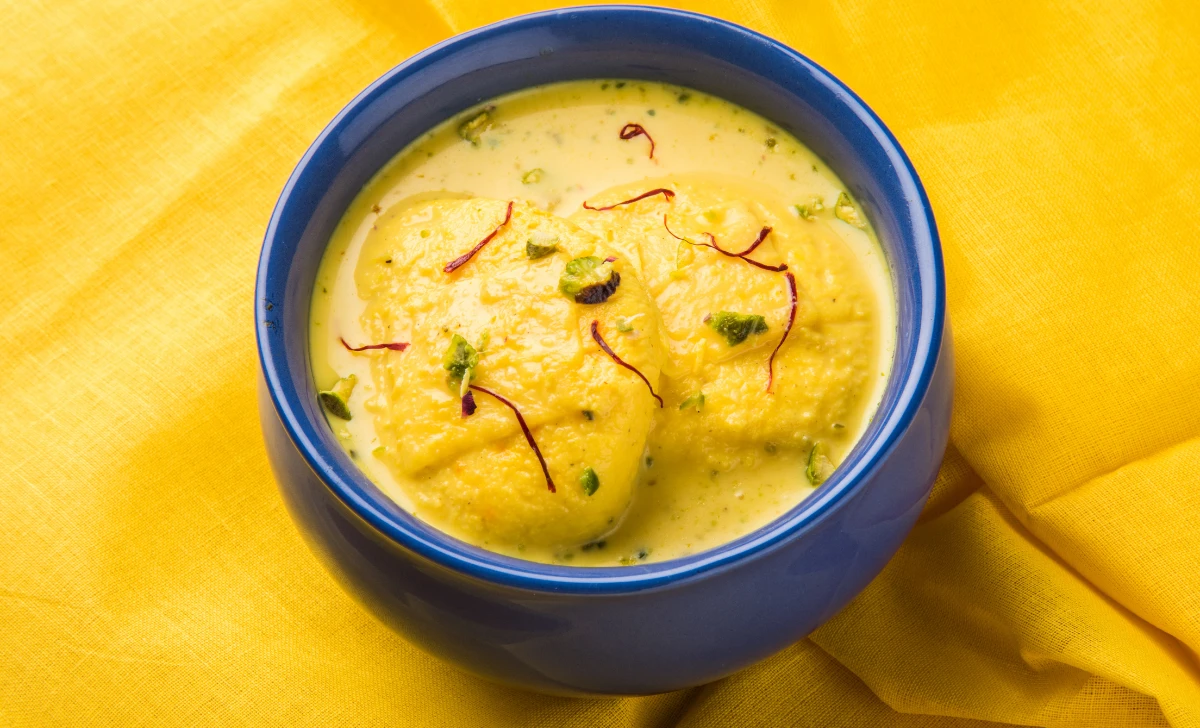

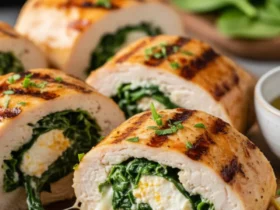
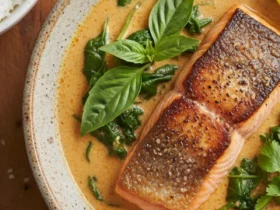
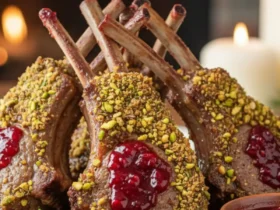
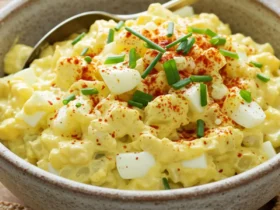
Leave a Review